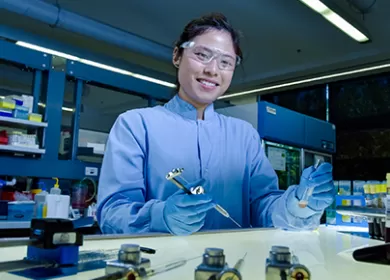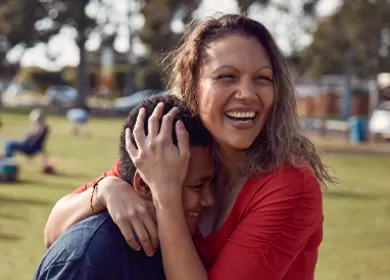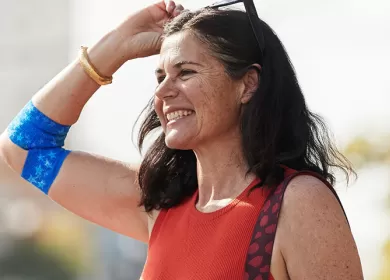The blood type you didn’t know you had
We’re always learning new things about blood types.
Sometimes it takes a rare occurrence for us to understand the commonplace. In world-leading research, Lifeblood scientists have worked with colleagues in Thailand to uncover a blood group that, until now, has hidden in plain sight.
Apart from the commonly known ABO (A, B, AB and O) and Rhesus (positive or negative) blood groups, there are hundreds of possible variations in blood type, encoded in our genes and reflected in small changes on the surface of red blood cells. Accurate matching of these blood groups is particularly important for people who require frequent blood transfusions, such as those with diseases like thalassemia or sickle cell anaemia. Frequent transfusions with blood that isn't a perfect match may lead to the development of harmful antibodies. This is what happened to one patient in Thailand, and it's his antibody that begins our story.
The Thai patient received a blood transfusion to help rectify his anaemia. He suffered from thalassemia, an inherited blood disease in which the body doesn’t make enough of the oxygen carrier, haemoglobin. After the transfusion, his body reacted by developing antibodies that could destroy red cells, which meant that any future transfusions for the patient needed to be from blood that would not be destroyed by those antibodies. The Thai Red Cross National Blood Centre took samples of the patient’s blood, and scoured their collections for blood that would evade the antibodies developed by the patient. They found just two compatible units of blood in their collection of thousands of samples. The Thai scientists now had three blood samples: one from the patient and two from donors, and they knew that these samples had something rare in common — they just didn’t know what yet.
It was then that a Lifeblood red cell serologist, scientist Dr Yew-Wah Liew, who was in Thailand for an international symposium, visited the Thai laboratory and noticed a poster describing the unsolved problem of the patient’s unusual antibody. This fortuitous visit sparked an exciting international collaboration as researchers in Australia and Thailand set out to solve the problem. The task was to find out what was special about the red cells from the patient and the two donors. For the answer, the researchers turned to leading-edge red cell serology and genetic analysis called massively parallel sequencing, a specialty of our Research team at Lifeblood.
Back in Australia, Lifeblood scientists tested the three samples with very rare and specific reagents, and analysed the blood group genetics for all three. They found that all samples had one particular molecular change in common.
“The total testing strategy is very innovative and uses a combination of techniques that look at genes and at proteins,” explains Professor Robert Flower, group leader. “We gathered lots of data and it all fitted together, showing that this patient had a new variation in one of his red cell surface molecules. Patients who have this variation are at risk if they receive blood from anyone other than another person with the same variation”.
In September 2016, scientists from Professor Flower’s team, along with the Red Cell Reference laboratory manager travelled to Dubai, presenting their results to the International Society for Blood Transfusion Reference Group, where their work was accepted as proof of the existence of a new blood group that is shared by more than 90% of people, to be known as JENU (and officially designated MNS49).
This story is just one example of how modern genetic techniques allow blood types to be characterised with pinpoint accuracy.
“What’s great about this work is that it shows our researchers are part of a global community of research scientists who work together to improve the practice of blood transfusion worldwide,” concludes Professor Flower.




